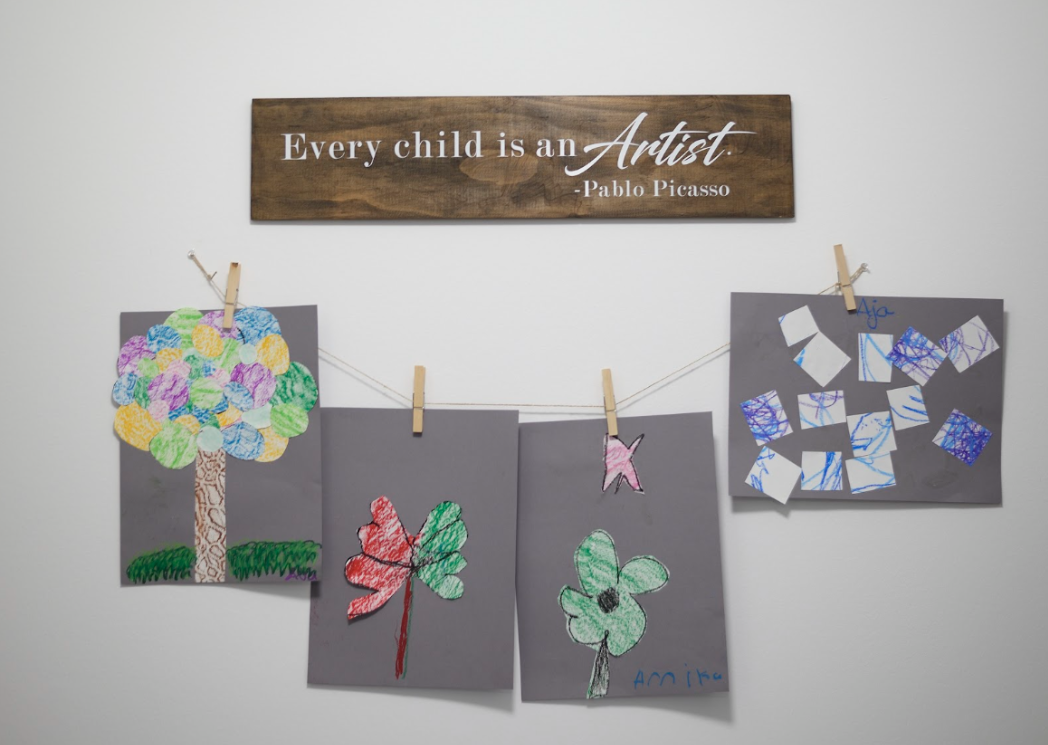Why Creative Expression is so Important for Kids


Psst… we’re going to tell you a secret. STEM isn’t the only important thing for your child to learn.
While standardized tests and academic achievement often hold our attention, we may inadvertently overlook the fundamental importance of artistic expression in children's development. Math and science absolutely provide crucial skills, but neglecting arts education comes at a significant cost. Let's delve into the profound role art plays in fostering well-rounded, emotionally intelligent, and innovative individuals.
Art is everywhere, from the architecture of our homes, to the music on our radios, to the clothes we wear. A world without art? That sounds incredibly boring. In fact, it’s our mission to pass down a love of art through art education to the youngest learners. And it’s not just for aesthetic purposes, either – creativity is necessary for child development.
Cultivating Healthy Minds
Art nurtures children's mental health and well-being. Engaging in artistic activities provides a safe space for self-expression, allowing them to process emotions, navigate anxieties, and build confidence.
Oftentimes, creativity for kids comes naturally. Whether it's through the freedom of painting, the rhythm of music, or the tactile focus of sculpting, children can explore their inner world, reducing stress and promoting emotional self-regulation. Art therapy can effectively combat anxiety, depression, and even trauma, highlighting its powerful impact on mental health.
Celebrating Uniqueness
Every child is born with a unique spark of creativity. Art allows them to embrace and express this individuality, fostering a sense of self-worth and empowerment. As they experiment with different techniques, mediums, and styles, they discover their own artistic voice and learn to appreciate the uniqueness of others. This celebration of diverse perspectives and expressions fosters empathy, tolerance, and acceptance, laying the foundation for strong social-emotional development.
Encouraging problem solving
Art isn't merely about creation; it's also problem-solving in disguise. From mixing colors to match the one in their mind’s eye to figuring out how to construct a three-dimensional form, children engage in critical thinking and decision-making throughout every step of the artistic process.
They experiment, adapt, and overcome challenges, learning valuable lessons about resilience and resourcefulness. These skills translate beautifully into academic and real-world scenarios, equipping them to approach problems with an open mind and innovative solutions.
Collaborating and navigating
While individual expression is key, art transcends solo endeavors. Participating in group art projects fosters collaboration and teamwork. Children learn to communicate their ideas, listen to others, and work together towards a common goal.
They navigate disagreements, celebrate successes, and share resources, developing essential social skills necessary for living and working in community with others. They encounter other ideas and perspectives. Whether it's creating a collaborative mural, performing a play, or singing together, the power of artistic collaboration builds bridges and enriches interpersonal relationships.
Exploring the Spectrum of Creativity
Creativity takes many forms and children can learn to acknowledge its diversity, widening their worldview. While visual arts often come to mind, don't forget the importance of music, theater, dance, storytelling, and even culinary arts.
Encourage your child to explore different avenues of expression, allowing them to discover what lights up their creative spark. Creativity isn't just about producing masterpieces; it's about approaching everyday challenges with ingenuity and imagination.
Sparking their artistic journey
With our monthly art box, your child will constantly learn about the many ways they can be creative through engaging projects, diverse materials, and thematic learning experiences. Each box sparks curiosity, promotes creativity, and celebrates the unique artistic voice of every child.

The power of art in child development is an ongoing process. Knowing why creativity matters and nurturing creativity is about offering your child multiple ways to engage with their artistic side.